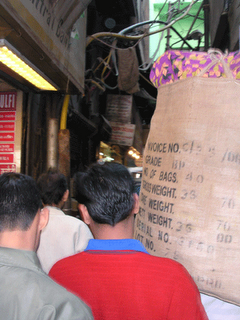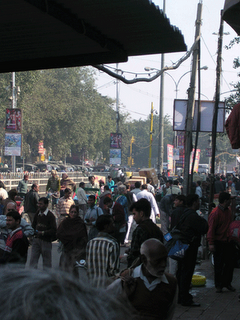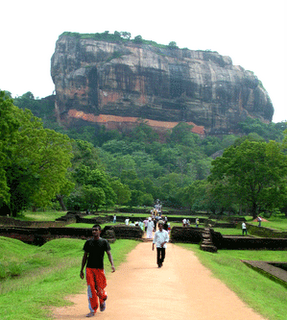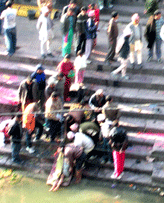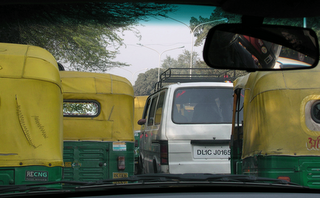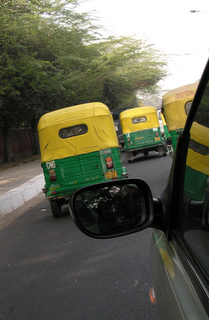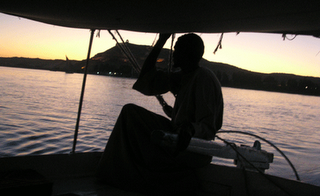"Pull Over!"
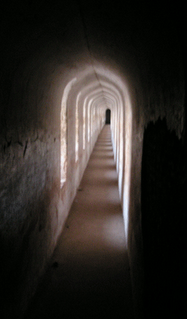 "Watch out!" someone yells from the back seat. My hand goes to the dash to brace myself. Disbelief makes me blink. A car has swerved across two lanes of traffic on the four-lane highway and is coming straight at us. It gets bigger and bigger, coming, coming … .
"Watch out!" someone yells from the back seat. My hand goes to the dash to brace myself. Disbelief makes me blink. A car has swerved across two lanes of traffic on the four-lane highway and is coming straight at us. It gets bigger and bigger, coming, coming … .Our driver stands on the brake and swerves to the edge of the road, screeching to a halt with the paint on my side only inches from the crash barrier. The other vehicle angles to a stop … not in front of us, as I expected, but behind.
"Police," our driver mutters.
How can he tell? And are they really?
Men are jumping out of the intercepting vehicle, and, while they’re not in uniform, they do look like they mean business.
"It wasn’t my fault," our driver says taking a stack of papers and walking back to them. "I would’ve paid the tax if the booth had been open."

Indeed, he had stopped at an empty booth as we entered the Indian province of Uttar Pradesh. But was it a booth for tax collectors? Like this so-called "police" car without any identifying paint or signs and like these "policemen" with no uniforms, the booth had been undistinguished by anything except its emptiness.
A lifetime in the third world tells me that none of this matters much. A table can be a tax collection point. A pair of rubber flipflops can be a uniform. On the other hand, thieves and brigands can do a great job of imitating the authorities.
Out of five passengers in our car, three carry diplomatic passports. Two of them—both women—follow the driver.
"What’s this about," demands the senior of the two. She’s all of five foot four inches tall, has an almost permanent smile beneath a mop of curly, light brown hair, and weighs a bit more than she should. Her voice tells everyone that they had better not be deceived by her appearance … she’s tough. And, as a former nurse, nutritionist, college professor, and a current administrator of a multi-million dollar program, she is.
Like the unmarked car, what you see is not necessarily what you get.
"If your tax people had the booth open, the tax would’ve been paid," the second woman drills English words into the dark, male heads. "Your fault. Your fault. Your fault."
"Where’s your identification? What are your names?" says the first.
What we’re all wondering is why the car full of men singled out our vehicle. Later, I ask if the driver was supposed to be exhibiting some sort of tax coupon in the window. "Yes, yes!" he agrees, much too fast. Besides, as soon as the thought was out of my mouth, I realize that the car began to intercept us when it was still way to far away to see any piece of paper in the window.
No. It’s something else. Smuggling? Police extortion?

As soon as the rubbish idea of a tax coupon is swept off the table, I realize that the car we’re in is known. This isn’t surprising since it belongs to a service that provides cars and drivers to tourists. Both car and driver are probably back and forth through Uttar Pradesh several times a month, if not more frequently.
The "police" give up and leave. For whatever reason, they go away—diplomatic passports, American women, mistaken identity, fear of an incident that will affect their careers, failed plans … I don’t know.
Later, we pull into a gas station and stop at a pump. The driver buys a fraction of a liter of gas. But not more. So, what does he do there? Why the stop?
My mental teeter-totter—smuggling at one end and police extortion at the other—plops down hard on smuggling.
We never will know for sure. We never want to know. We may have been very, very lucky.

